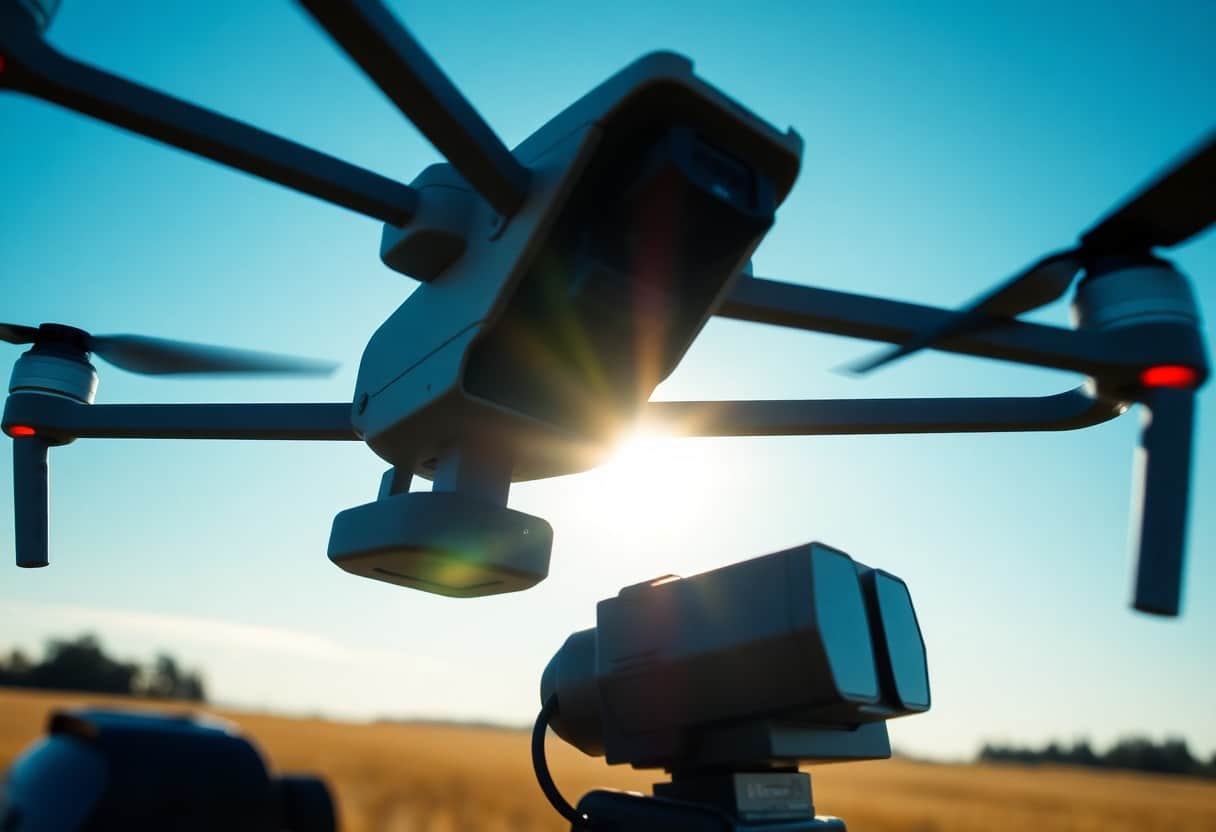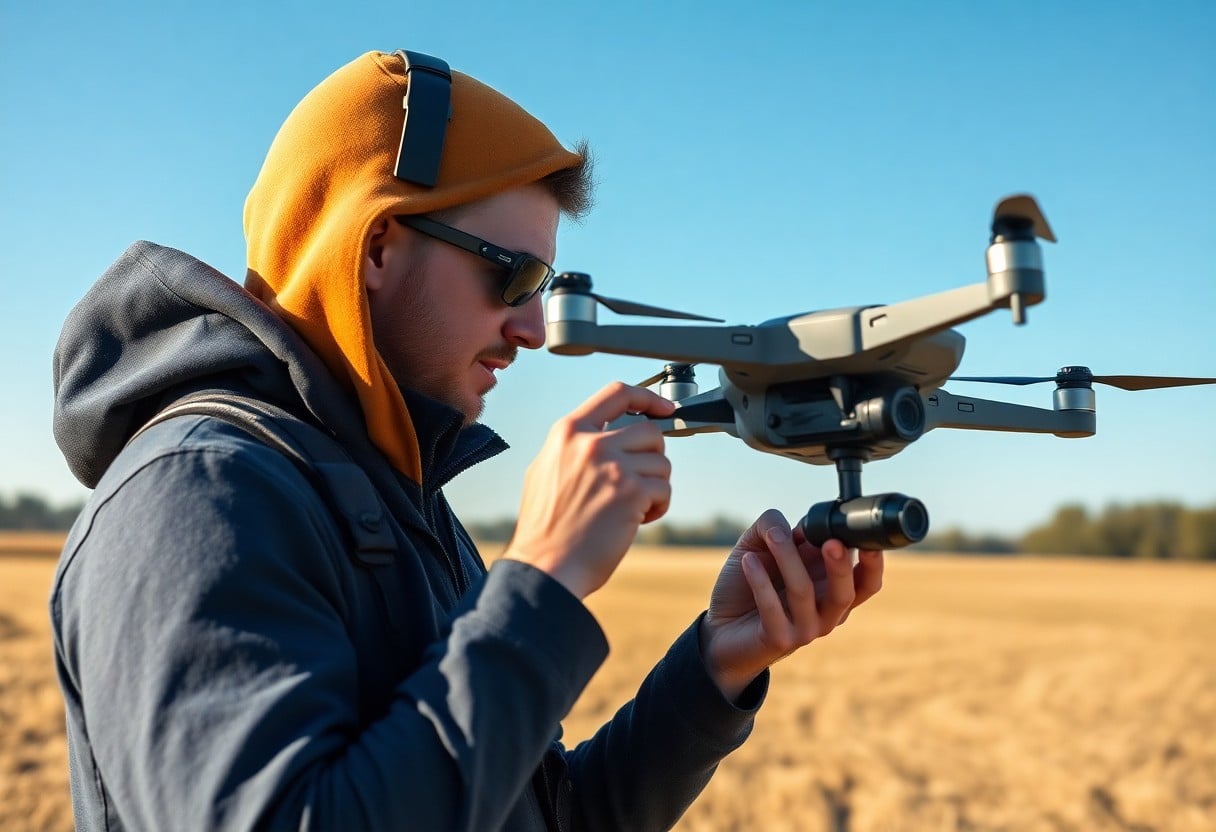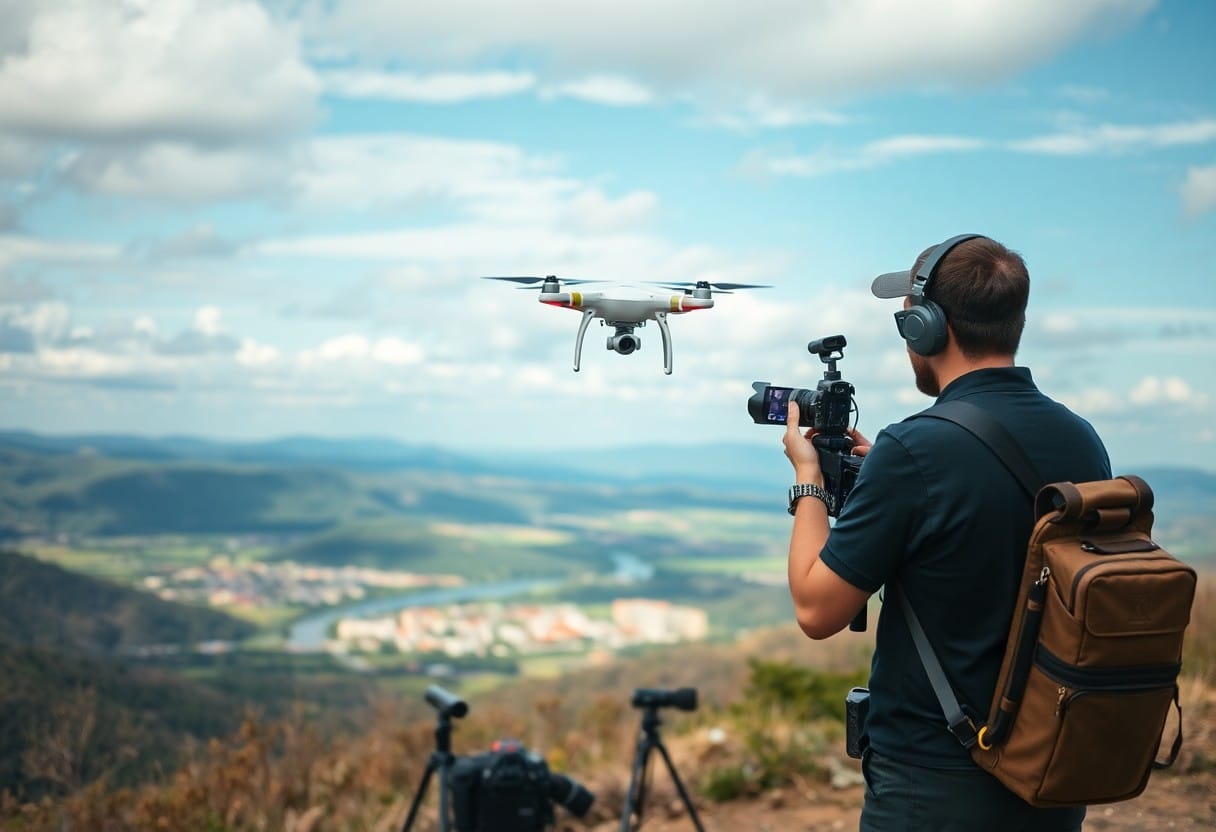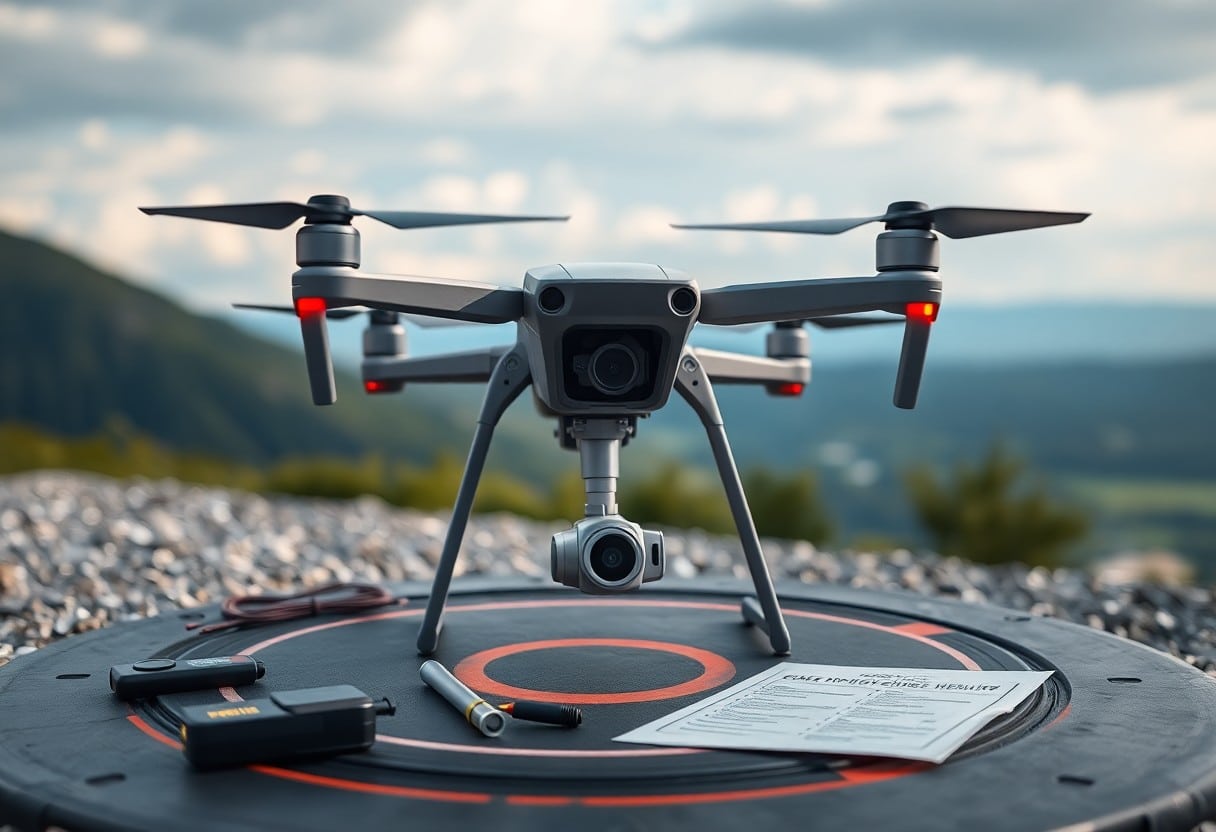How to master the fundamentals of drone operations for safe flight?
In this article, you will learn toBasic Skills for Drone OperationThis is essential to ensure that your flying experience is both safe and enjoyable. Mastering these basics can help you effectively avoidPotential DangerThe first thing you need to do is to learn how to use the software and improve your skills. Whether you're a beginner or an experienced operator, learn how toProper operation of dronesThe key is that you can't afford to ignore it. Follow our instructions to make your drone flights safer and more professional.
Key Points:
- Understanding the Principles of Flying: To master the basic operating principles of a drone, including lift-off, landing and stabilized flight.
- Compliance with laws and regulations: Familiarize yourself with local regulations on drone use and ensure that you are flying legally.
- Conduct pre-flight inspection: Check the status of the drone's hardware, software, and batteries before each flight.
- Selection of the appropriate flight environment: Choose open, safe areas for flying and avoid flying in crowded or obstructed areas.
- Mastering the Maneuvering Skills: Familiarize yourself with the operation of the remote control and perform simulated flights to improve your control skills.
- Keeping Perspective: Always keep your eyes on the drone to avoid obstacles or uncontrolled flight.
- Learning about Emergency Measures: Understand how to land safely or deal with possible malfunctions in different situations.
Understanding Drone Fundamentals
In learning how to operate a drone, you first need to understand the basic concepts of a drone. A drone, also known as an unmanned aerial vehicle, is an aircraft that can be operated automatically or remotely without a pilot. Mastering these basics is essential to ensure safe flight. How Drones Work,Flight Rulesrespond in singingCommon Usesis an essential element that every operator should be familiar with.
Drone Type
There are many different types of drones, each with its own characteristics and uses. The main types of drones include the following:
- multirotor: The most common type, suitable for beginners.
- fixed wing: Suitable for long distance flights.
- vertical take-off and landing: Can take off and land in tight spaces.
- Mini Drone: Easy to carry and suitable for indoor flying.
- Professional Drone: Used for image taking and agricultural management.
Knowing the type of drone you've chosen can help you target your operational skills.
Components for Drones
The operation of a drone depends on several important components. These components must work together to ensure the stability and control of the drone. These include:
| fuselage | The main structure of the drone that carries all the components. |
| Battery | Provide the power source for the drone. |
| propeller | An important component that enables the drone to take off and hover. |
| controllers | Responsible for the operation and navigation of the drone. |
| Camera | Optional accessory for filming and recording. |
Each component of the drone plays a key role, and understanding the functions of these components will help you make informed choices in your operations.
When you dig deeper into the components of a drone, you'll find that thefuselageIt is the centerpiece that supports all structures, andBatteryThe capacity of the system has a direct impact on the flight time. In addition, thecontrollersThe sensitivity and accuracy of the performance improves the precision of your operation. Choose a suitableCameracan help you perform specific shooting tasks while familiarizing yourself with thepropellerIt is also increasingly important to know how to maintain your drone in order to prevent accidents from occurring. Again, understanding the components of your drone is essential to safe flying. Knowing this information will make your flying experience safer and more enjoyable.
Regulatory Requirements
Before operating a drone, you must be aware of the regulatory requirements. This not only ensures your safety but also avoids legal liabilities. You can refer toUltimate Pre-Flight Checklist - 9 Steps to Effective Drone OperationsIn addition, you will be able to learn about local regulations and operational requirements.
FAA Drone Regulations
The Federal Aviation Administration (FAA) has established a number of regulations for drone operation. You are required to operate your drone at a legal flight altitude and comply with restricted areas. In addition, you are required to ensure that your drone is registered and that you maintain a line of sight to the drone while flying to avoid unnecessary accidents.
Local legislation and restrictions
In different states and cities, drone operations may be subject to additional legislative restrictions. It is important that you are aware of the specific regulations in your area, for example, flying may be prohibited in certain public places or on private property.
It is important to know the local laws.Some cities may have flight restrictions or require specific permits. Some cities may have flight restrictions or require specific permits, or you may face fines or legal action. You need to be especially careful when flying near your home, school or hospital.Avoid posing a potential threat to others by checking your local government's website regularly. Regularly checking your local government's website can help you stay up-to-date on regulations and restrictions and maintain safe and compliant flight operations.

Prepare for takeoff
Before you start flying your drone, you need to conduct a thoroughPrepare for takeoff. This includes carefully studying your drone operator's manual to make sure you are familiar with all the controls and flight modes. In addition, you can refer to this articleUnleash Your Potential - 7 Steps to Complete Proficiency with 3D Modeling SoftwareTo get the beginner's flying skills. Remember to choose an open, safe place to fly so you can reduce the risk of accidents.
Weather Considerations
Before flying your drone, you must check the currentWeather conditionsYou may not be able to fly in the wind, rain or low visibility conditions. Strong winds, heavy rain or low visibility conditions may affect your flight safety. Avoid flying in winds over 24 kilometers per hour The flight is not a good time to take off, as it will challenge your maneuvering.
Equipment Checklist
Ensure that your drone carries out a fullEquipment InspectionThis is a critical step in safe flying. Before flying, check the battery level, propeller integrity, camera operation, and GPS system reception. You should also double-check all communication devices.Ensure trouble-freeTo avoid accidents.
There are a few key items you should focus on in your equipment checklist. For example, be sure to check that your batteries are fully charged.70%above to ensure that you have enough flight time. And any cracks or deformations in the propeller must beReplacementThis is because it may have an impact on flight stability. Regularly check for firmware updates for your drone, which can improve performance and safety.

Basic Flying Techniques
Mastering basic flying techniques is the key to operating your drone safely. Understanding your drone's controls and familiarizing yourself with each button and function will help increase your flying confidence. In addition, maintaining a stable attitude and correct flight speed are essential to ensure safe flight.
Takeoff and landing
Taking off and landing are the most important steps in flying a drone. You should take off in a flat, open area and follow the procedures for each stage to ensure the drone'sstability. When landing, reduce altitude and remain alert to avoid landing on unstable ground or near obstacles.
Navigating and controlling drones
Good navigation and control are central to drone flight. You need to familiarize yourself with the flight range of the drone and use the controls to adjust your orientation. Always keep the drone in sight of potential risks and obstacles during flight.
existnavigationOn the other hand, using the GPS function can help you better track the drone's position and reduce the risk of collision with ground obstacles. Remember, during flight, you should always adjust the altitude and direction to cope with wind speed and environmental factors. At the same time, stay focused and avoid distractions to ensure the safe flight of your drone. Any unintentional maneuver may result inSerious consequencesThis is why it is so important to train your reflexes.

Security Agreements
When flying a drone, observeSecurity AgreementsIt is important that you familiarize yourself with local laws and regulations. You should familiarize yourself with local laws and regulations and make sure you are operating in the proper flying area. Remember to refer to theWhat are the basic drone controls every beginner should know?This is to ensure that your flight is safe and compliant.
Keep a safe distance
While flying the drone, keepSafe distanceVery Important. You should keep a proper distance from crowds, buildings and other obstacles to avoid potential danger and damage. This protects not only your personal safety, but also the people and property around you.
Emergency procedures
Accidents can happen at any time, so you must familiarize yourself with the followingEmergency procedures.. Know the troubleshooting methods and operating instructions of your drone in advance so that you can respond quickly when faced with an emergency situation. Ensure that your drone is equipped with the necessary safety devices and that they are regularly inspected.
When developing emergency procedures, make sure you know exactly how to quickly shut down your drone or make it return to flight automatically. In the event of a low battery or other malfunction, your drone should be able to return to its point of origin in a timely manner, which will minimize the risk of an unplanned landing. Know and follow theThese emergency procedureswill help keep your flight safe and smooth.
Maintenance and Troubleshooting
Regular maintenance and troubleshooting is an important part of safe flight when operating a drone. With proper maintenance, you can extend the life of your drone and reduce the risk of failure. Check your drone's components before and after each flight and maintain good operating practices at all times.
Regular maintenance practices
To ensure that your drone is functioning properly, you should establish a regular maintenance program. For example, check the condition of the batteries, rotor blades, and all electrical connections to make sure they are not worn or damaged. You should also keep your drone clean to prevent dust and debris from affecting performance.
Identifying and solving common problems
There are a number of problems that can occur during the use of a drone. If you can recognize and resolve these common problems in a timely manner, it will help keep your flight safe. Frequent checks of the flight control system, sensors and batteries allow you to correct problems before they occur.
When identifying and resolving common problems, you should first be concerned about the drone's behavior. For example, if the drone fails to hover steadily or appears uncontrollable, this may be due to a faulty sensor or battery emergency. In this case, the drone should be inspected immediately and replacement parts may be required. In addition, you should always check to see if the drone's firmware needs to be updated, which can further enhance its performance and stability and avoid potential safety hazards.
How to master the fundamentals of drone operation to ensure safe flight?
Mastering the fundamentals of drone operation is critical to ensuring safe flight. First, you need to read and understand the instruction manual to understand the features and functions of the drone. Next, follow traffic regulations, know the legal limitations of the area you are flying in, and remain aware of your surroundings. In addition, improve your handling skills by practicing regularly and learn to cope with different flying conditions. Finally, remember to check your equipment before each flight to ensure it is in good condition. By taking these steps, you will be able to fly your drone safely and confidently.
Frequently Asked Questions (FAQ)
Q: How do I start learning the basics of drone operation?
A: To begin learning the basics of drone operation, you must first understand the components of a drone and its functions. This can be accomplished by taking a drone flying course, online learning resources, or reading relevant books, and by actually operating an entry-level drone.
Q: What safety measures are needed to ensure the safe flight of a drone?
A: Ensuring the safe flight of a drone requires compliance with local aviation laws and regulations, selecting a suitable flying area, and checking the condition of the drone's equipment and batteries. Before flying, it is recommended to conduct a flight plan and keep your attention at all times to avoid collision with other people or objects.
Q: How do I choose a drone for beginners?
A: Beginners should choose a drone that is easy to operate. It is recommended to choose models with self-stabilization, GPS navigation and collision avoidance systems. A lightweight and drop-resistant design also helps to minimize the risk of damage during the learning process.
Q: What laws and regulations do I need to be aware of when operating a drone?
A: When operating a drone, you need to understand and follow local aviation laws and regulations, including flight altitude restrictions, no-fly zones, and drone registration requirements. Please make sure you understand your local laws to avoid flying in violation of them.
Q: How can I improve my drone operation skills?
A: Improvement of drone operation skills can be achieved through regular training and simulation exercises. It is recommended to attend advanced flight courses, watch instructional videos and talk to experienced operators.
Q: What should I do if I have a problem with my flight?
A: If you encounter a problem during flight, first stay calm, turn off the drone's controls and terminate the flight. If the drone malfunctions, please refer to the instruction manual for troubleshooting and seek professional technical support if necessary.
Q: What are the precautions for battery management in a drone?
A: Battery management of the drone is very important. It is recommended to use the original charger for charging to avoid over-discharging. Check the battery status before flight, charge it in time after flight, and store the battery in a suitable environment to ensure its service life and performance.




